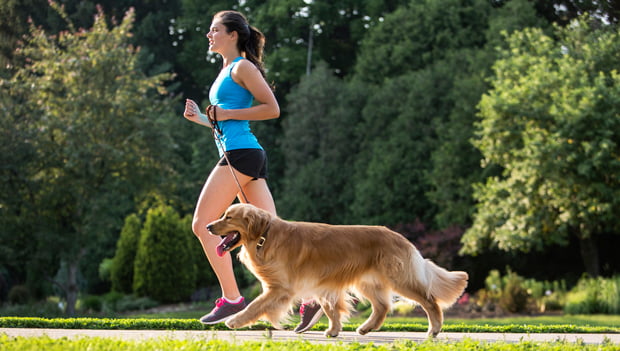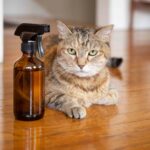Table of Contents
Regular exercise is essential for the health and happiness of pets. Just like humans, pets need physical activity to maintain their physical and mental well-being. Understanding the importance of regular pet exercise can help you provide the best care for your furry friend. This guide outlines seven key reasons why consistent exercise is crucial for your pet’s overall health.

1. Maintains a Healthy Weight
One of the most significant benefits of regular exercise is weight management. Obesity in pets can lead to various health problems, including diabetes, heart disease, and joint issues. Here’s how exercise helps:
- Burns Calories: Physical activity helps burn calories, preventing excess weight gain.
- Increases Metabolism: Regular exercise boosts your pet’s metabolism, aiding in weight management.
- Prevents Obesity-Related Diseases: Maintaining a healthy weight reduces the risk of obesity-related diseases.
2. Strengthens Muscles and Joints
Exercise is crucial for maintaining strong muscles and joints. It helps pets stay agile and reduces the risk of injury:
- Builds Muscle Mass: Regular activity helps build and maintain muscle mass.
- Improves Joint Health: Exercise lubricates joints, reducing the risk of arthritis and other joint problems.
- Enhances Flexibility: Physical activity improves flexibility and overall mobility.
3. Enhances Mental Health
The importance of regular pet exercise extends to mental well-being. Exercise provides mental stimulation, reducing the risk of behavioral issues:
- Reduces Anxiety: Physical activity can help alleviate anxiety and stress in pets.
- Prevents Boredom: Regular exercise prevents boredom, which can lead to destructive behaviors.
- Improves Mood: Exercise releases endorphins, improving your pet’s mood and overall happiness.
4. Promotes Heart Health
Regular exercise is essential for maintaining cardiovascular health. It helps keep your pet’s heart strong and healthy:
- Strengthens the Heart: Exercise strengthens the heart muscles, improving cardiovascular health.
- Improves Circulation: Physical activity enhances blood circulation, ensuring efficient nutrient and oxygen delivery throughout the body.
- Reduces Blood Pressure: Regular exercise can help lower blood pressure, reducing the risk of heart disease.
5. Boosts the Immune System
Exercise can enhance your pet’s immune system, making them more resistant to illnesses:
- Increases Immune Cells: Physical activity boosts the production of immune cells, improving the body’s defense mechanisms.
- Reduces Inflammation: Regular exercise helps reduce inflammation, supporting overall health.
- Promotes Healing: A strong immune system aids in faster recovery from injuries and illnesses.
6. Strengthens the Bond with Your Pet
Regular exercise provides an excellent opportunity to strengthen the bond between you and your pet:
- Quality Time: Spending time exercising with your pet enhances your relationship and builds trust.
- Positive Reinforcement: Exercise sessions can be used for training and positive reinforcement, improving your pet’s behavior.
- Mutual Enjoyment: Engaging in physical activities together provides mutual enjoyment and strengthens the emotional connection.
7. Improves Socialization Skills
Regular exercise can improve your pet’s socialization skills, making them more comfortable around other animals and people:
- Exposure to New Environments: Exercise often involves taking your pet to new places, which helps them adapt to different environments.
- Interaction with Other Pets: Activities like walks in the park allow your pet to interact with other animals, improving their social skills.
- Builds Confidence: Regular exposure to various stimuli builds your pet’s confidence and reduces fearfulness.
Conclusion on the Importance of Regular Pet Exercise
Understanding the importance of regular pet exercise is crucial for maintaining your pet’s health and well-being. Regular physical activity helps manage weight, strengthen muscles and joints, enhance mental health, promote cardiovascular health, boost the immune system, strengthen the bond with your pet, and improve socialization skills. By incorporating regular exercise into your pet’s routine, you can ensure they lead a happy, healthy, and active life. For more tips on pet care and exercise, visit the ASPCA and AKC.
FAQs on the Importance of Regular Pet Exercise
How much exercise does my pet need?
The amount of exercise your pet needs depends on their breed, age, and health. Generally, dogs need at least 30 minutes to 2 hours of exercise daily, while cats benefit from 15-30 minutes of active play.
What types of exercise are best for pets?
The best types of exercise for pets include walking, running, playing fetch, swimming, and engaging in interactive play with toys. Choose activities that suit your pet’s breed, age, and health.
Can indoor exercise be effective for pets?
Yes, indoor exercise can be effective, especially for cats and small dogs. Use interactive toys, play games like hide-and-seek, and create obstacle courses to keep your pet active indoors.
How can I tell if my pet is getting enough exercise?
Signs that your pet is getting enough exercise include maintaining a healthy weight, having a good appetite, displaying normal energy levels, and not showing signs of boredom or destructive behavior.
Are there any risks associated with too much exercise?
Yes, too much exercise can lead to exhaustion, joint injuries, and other health issues. Always monitor your pet for signs of fatigue and adjust their exercise routine accordingly.
What should I do if my pet refuses to exercise?
If your pet refuses to exercise, try different activities to find what they enjoy. Consult your vet to rule out any underlying health issues that may be causing reluctance to exercise.











